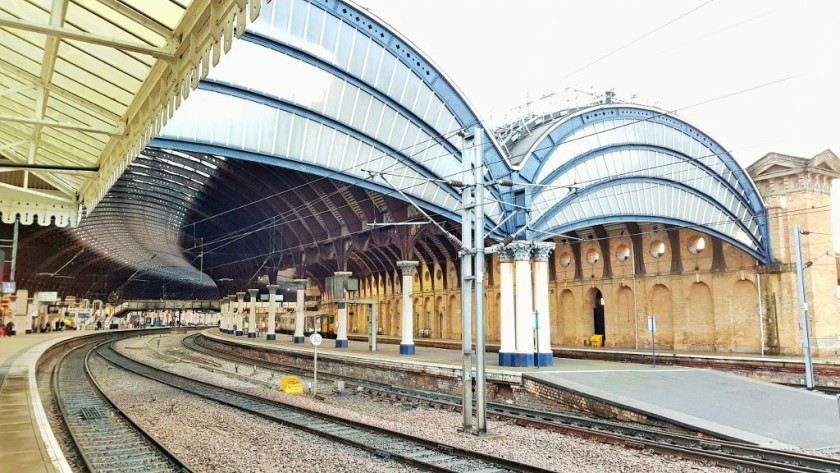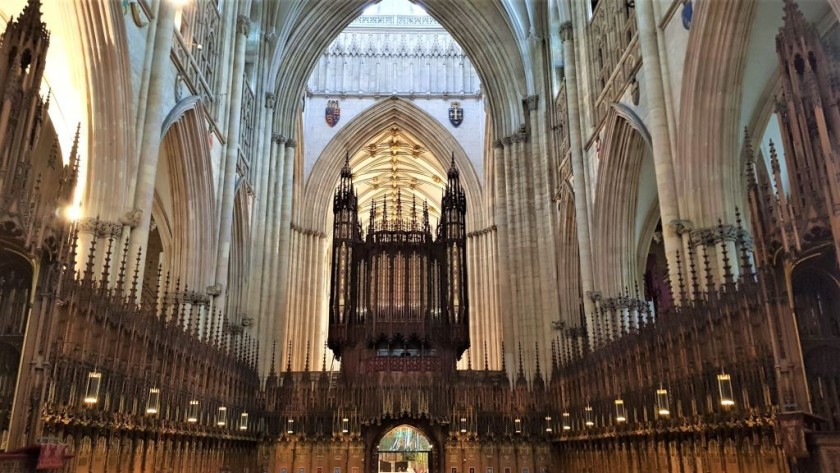Related Content
Content

York (York)
York’s glorious station dates from 1877, but the facilities expected by contemporary travellers have been provided, without compromising the station’s stunning architecture.
Share
At a Glance
Services
Travel Information Desk
First Class Lounge
Accessibility
Step Free
Onward Travel
Car Hire
Taxi Rank
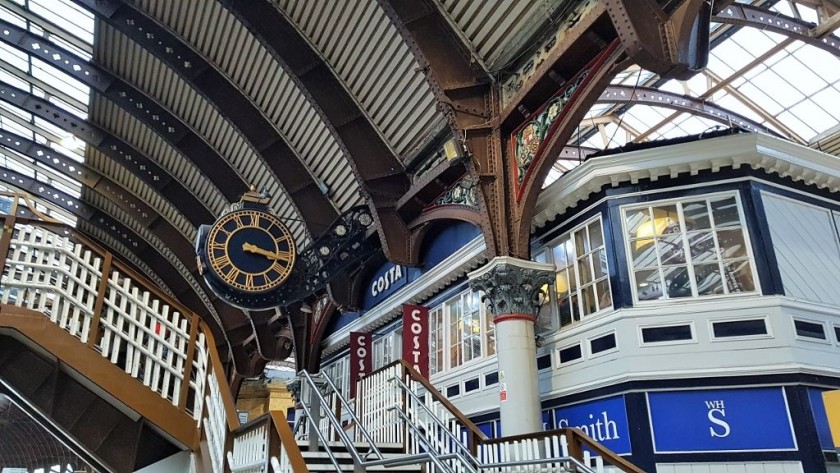
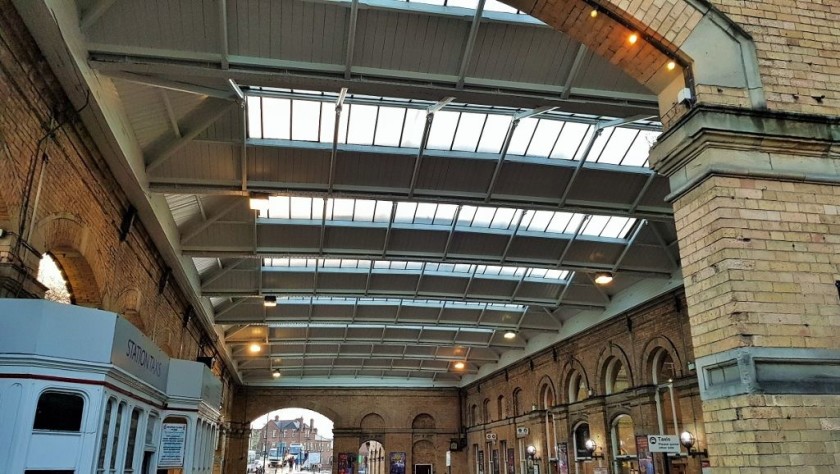
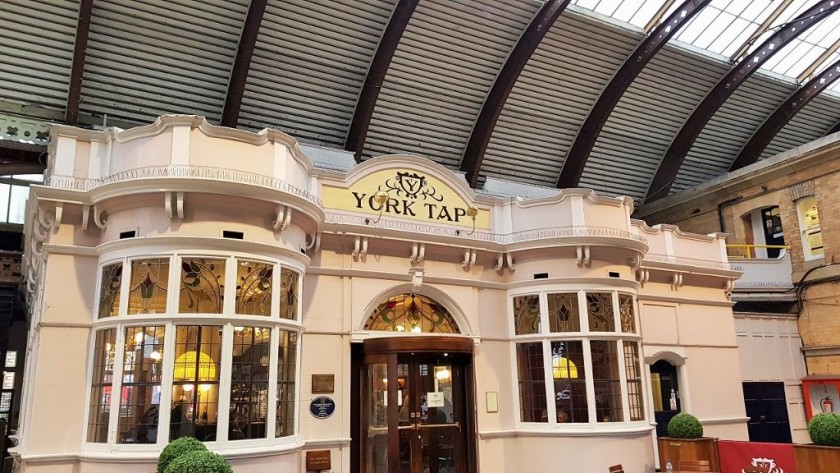
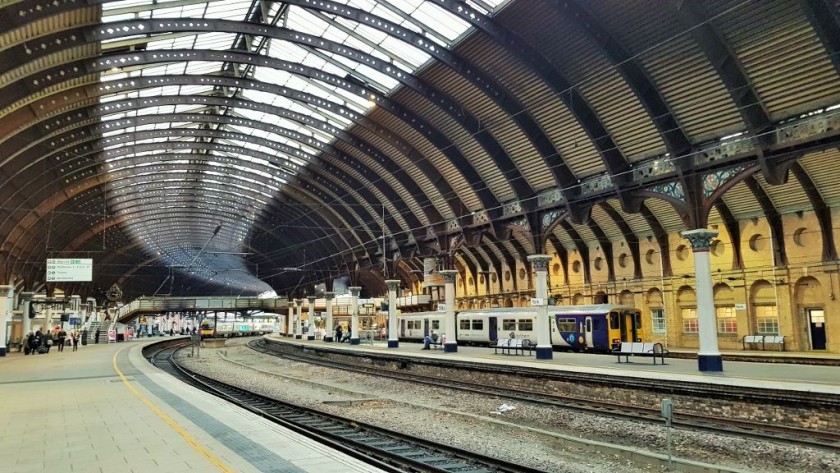
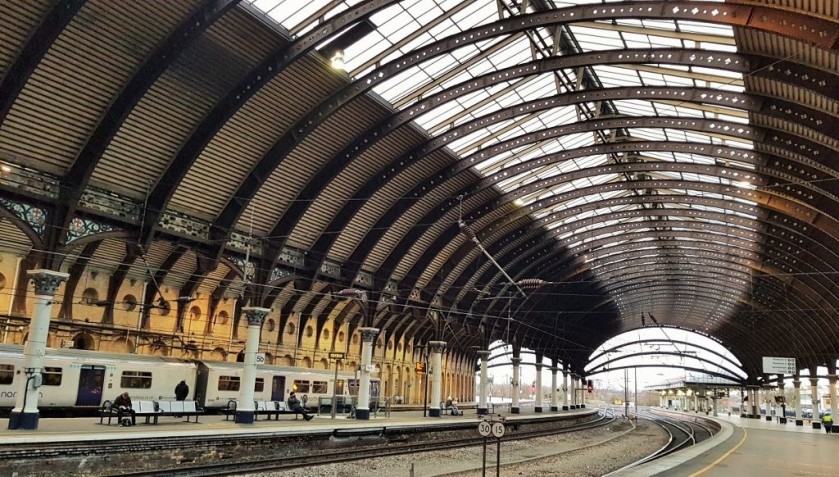
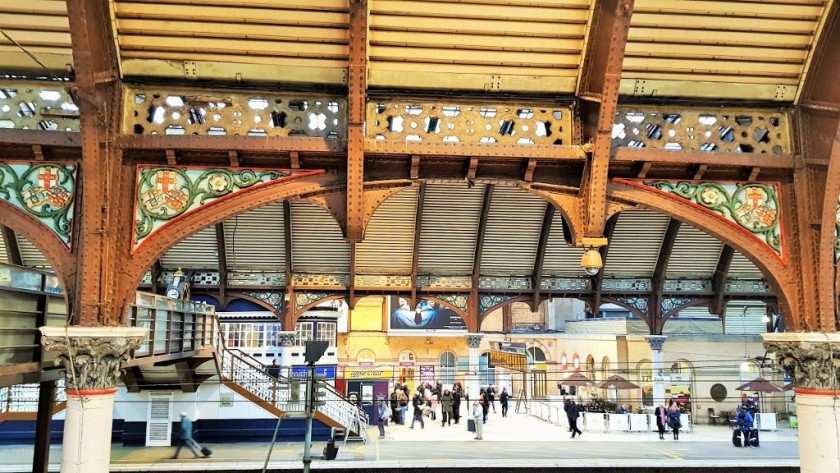
If you are new to using York station it can make sense to think of it as a station with three parts:
- Platforms (tracks) 1 – 4 can be all be accessed on the level from the main entrance; platforms 1 and 3 are to the left and platforms 2 and 4 are to the right.
- Platforms 5 – 9 are in the middle of the station, with platforms 5 – 8 being under the magnificent roof.
- Platforms 10 and 11 are on the far side of the station from the main entrance and are outside the main roof.
Departing by train:
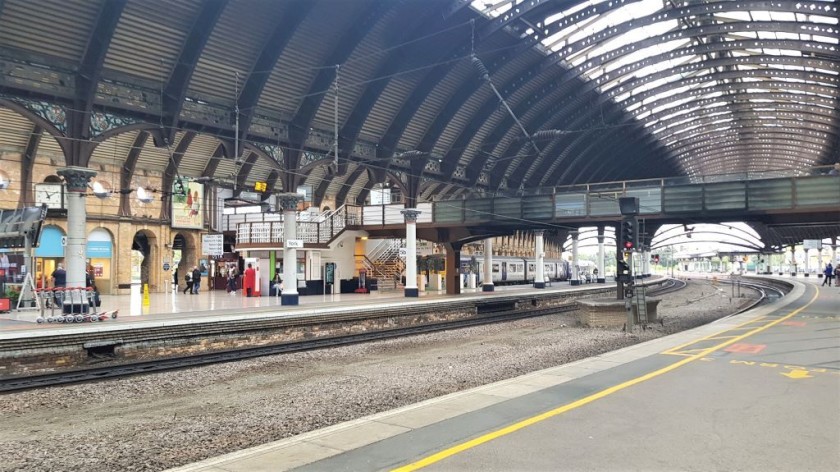

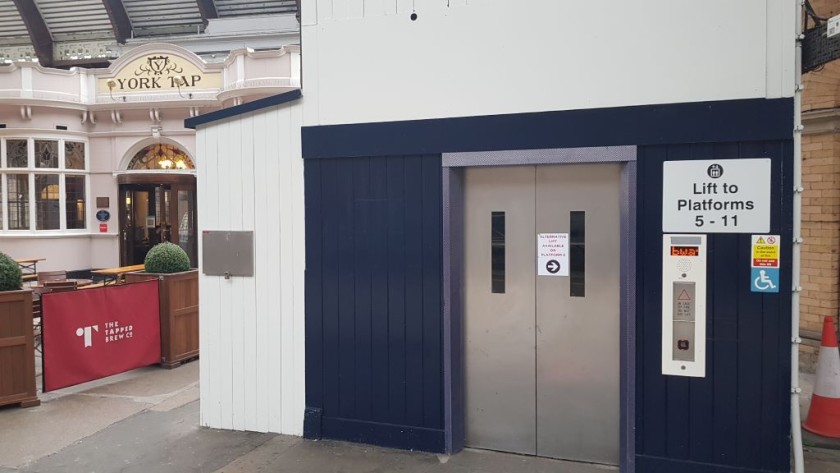
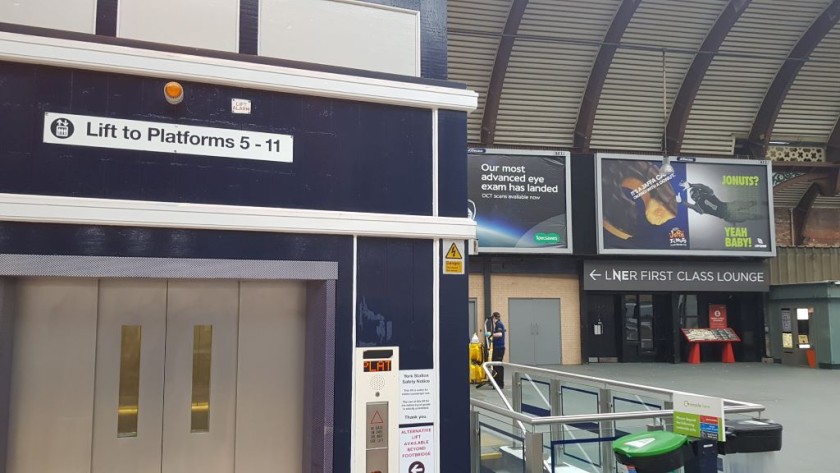

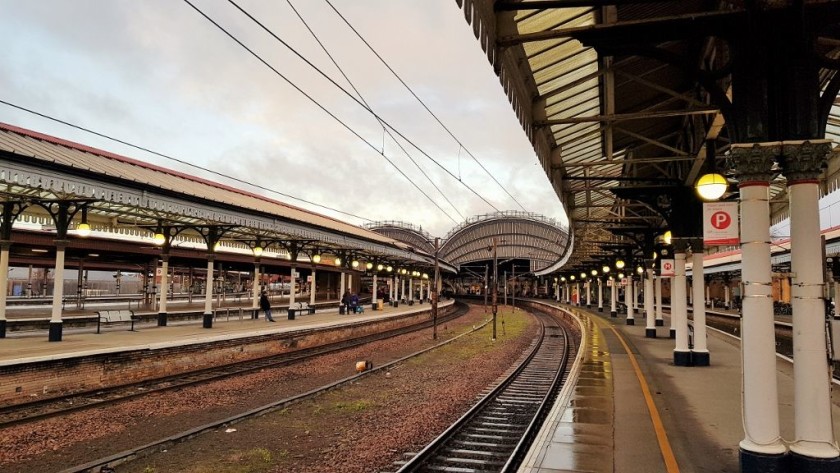
Aim to be at York station a minimum of five minutes before your train will be departing, make it 10 minutes if you'll want to use the lifts (elevators) to ensure you have step-free access to all parts of the station.
York is a large station, the far end of platform (track) 3 (where the First Class coaches of LNER trains can most often be boarded) and both platforms 2 and 4 are some distance from the main entrance.
The long platform you will step on to having passed through the station entrance, is divided along its length, with platform (track) 3 to the left; to access it you need to walk under the footbridge that spans the station.
Most, but not all of the LNER trains to London will depart from platform 3.
If you will be boarding an LNER train look out for the signs attached to the posts, which support the roof, which will tell you where each specific coach on a train will stop, when it arrives in the station).
Turn right for Platform 4, which is located towards the far end of this main platform.
To platforms (tracks) 5-11 at York station
A footbridge, which can only be accessed by stairs, spans the middle of the station and connects the main entrance to platforms 5 – 11.
Although you don’t have to use this footbridge to access the trains which depart from platforms 5 -11.
There are also two inevitably less visible subways which cross the station and at each end of these subways there are lifts (elevators); so using these subways provides the step-free access to the trains.
These subways are on either side of the footbridge, so on entering the main part of the station, you can turn left to access one of these subways, or turn right for the other.
The signage in the station will suggest that it doesn't matter which of these subways you use to access a train leaving from platforms 5 - 11.
Strictly speaking that is the case if your train will be departing from platforms 10 or 11, but if you want to use the shortest possible route to a train leaving from platforms 5-9, it does matter which subway you use.
If your train will be leaving from platforms 5-6 use the lift (elevator), which you will see on the left, once you're on the long platform, which runs the length of the station.
Or if you turn to the right, just by the fabulous York Tap pub/bar; SMTJ’s preferred location in which to wait for a train at York, is another lift.
It tends to be less busy and also gives access to all the other platforms (tracks) in the station, though it's particularly convenient for platforms 8 and 9.
Arriving by train:
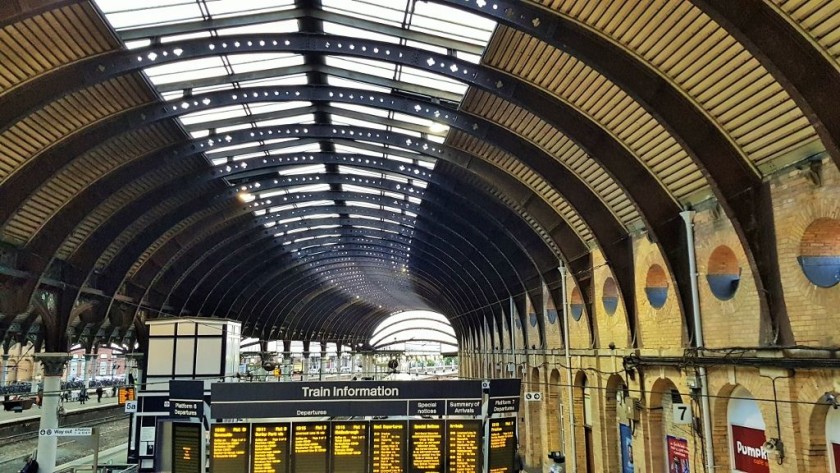
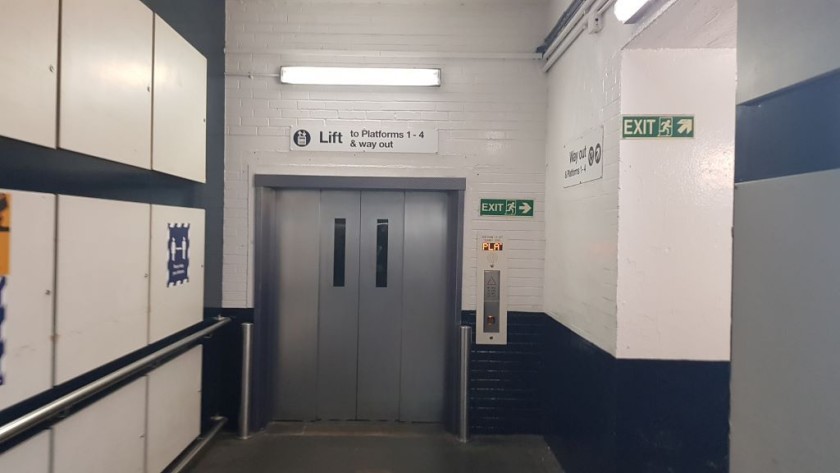
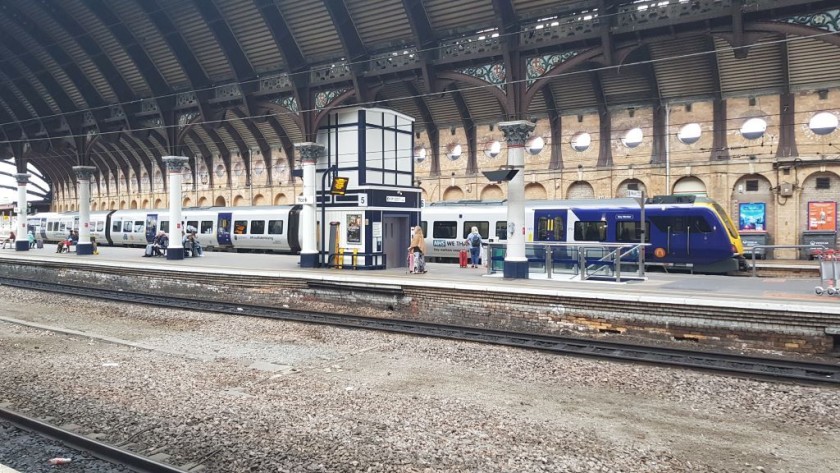
Platforms (tracks) 1 - 4 are all directly connected to the main exit, so if your train arrives in this part of the station, all you need to do is walk ahead.
If your train arrives at platforms (tracks) 5 - 11, you'll have a choice of means of accessing the exit at York station.
If you'll be happy to use the stairs, the most obvious route to take to the exit is the footbridge which spans the station.
If your train arrives at platforms (tracks) 5 - 9, you can either use the footbridge to access the exit, or for step-free access you can take the lifts (elevators) down to the subways and use the alternative routes described below:
- On platform 5 , depending on which part of the platform you step on to, you may have to walk under the footbridge to access a lift.
- On platform 6, if you're in the very front of the train, the lift will be behind you.
- From platform 7, it's best to access the lift over on platform 6.
- On platform 9, you may have to walk ahead under the footbridge in order to access the nearest lift.
- There is no lift on platform 8, but you'll find one on the adjacent platform 9.
Though if you'll be changing trains, check the departure board, as your onward train may be leaving from this part of the station and platforms (tracks) 5 - 9 are arranged so that you'll have to do is walk from one to another.
If your train arrives at platforms 10 and 11, there are other sets of stairs, as alternatives to those up to the main footbridge, which lead down to the two subways, which cross the station, under the railway lines.
If you'll be by these sets of stairs down to the subways, when you step off a train, using them will be your quickest route to the exit.
Or if you'd prefer a step-free means of exiting the station, then use the first of the two lifts (elevators) that you come to.
They both give access to a subway leading towards the exit; and at the other end of these subways, other lifts take you back up to street-level.
Train service summary:
Note that when travelling north from York towards Darlington, Durham and Newcastle, or south to Leeds, different train operating companies provide these services.
If you will be heading to these destinations and buy walk up tickets at the station, it will be valid on the next departure, regardless of which company is operating the trains.
The typical pattern of train departures from York is:
By CrossCountry trains
- to Edinburgh via Darlington, Durham, Newcastle and Berwick upon-Tweed = up to 1 x train per hour; 1 x train per day continues to Glasgow
- to Plymouth (some trains travel on to Penzance) via Leeds, Sheffield, Derby, Birmingham, Cheltenham, Bristol, Taunton, Exeter and Newton Abbot = up to 1 x train per hour
- to Reading via Sheffield, Derby, Birmingham, Leamington Spa and Oxford = 4 x trains per day on Monday to Saturday
By Grand Central trains
- to London King's Cross = 5 or 6 x trains non-stop trains per day
By LNER trains:
- to London King's Cross = 3 x trains per hour with 1 x train per hour being non-stop
- to Edinburgh via Darlington, Durham, Newcastle and Berwick upon-Tweed = 2 x trains per hour
Trains travel on beyond Edinburgh to: - 4 x trains per day continue to Aberdeen via Leuchars, Dundee and Arbroath
- 1 x train per day continues to Inverness via Stirling, Perth, Pitlochry and Aviemore
- 1 x train per day continues to Stirling on Monday to Saturday
- 1 x train per day continues to Glasgow
By Northern trains:
- to Blackpool North via Leeds, Bradford, Halifax, Hebden Bridge, Burnley and Preston = 1 x train per hour
- to Harrogate via Knaresborough = 2 x trains per hour
- to Bridlington via Hull = 1 x train per hour
- to Ikley = 2 x trains per hour
- to Leeds = 1 x stopping train per hour via Garforth; and 2 x stopping trains per hour via Harrogate
By TransPennine Express trains:
- to Liverpool via Leeds, Huddersfield and Manchester Victoria = 1 x train per hour
- to Manchester Airport via Leeds, Huddersfield and Manchester Victoria and Manchester Piccadilly = 1 x train per hour
- to Manchester Piccadilly via Huddersfield = 1 x train per hour
- to Newcastle via Darlington and Durham = 1 x train per hour
- to Saltburn via Thirsk, Northallerton and Middlesbrough = 1 x train per hour
The train services call at additional stations to those listed above.
Note that many locations are served by more than one company, so cumulatively the service from York per hour is;
- to Edinburgh = 3 x trains per hour
- to Leeds = 6 or 7 x trains per hour on the most direct route
- to Newcastle = 4 x trains per hour
Live departures can be looked up here
Book Accommodation
When planning a trip, finding convenient accommodation can be trickier than working out which train to take.
Hence ShowMeTheJourney has partnered with the innovative accommodation portal, Stay 22, to offer three options for discovering your optimum accommodation:
1: Use the map above to see which hotel rooms and Vrbo rentals, with easy access to York station, are available.
When planning a trip, finding convenient accommodation can be trickier than working out which train to take.
Hence ShowMeTheJourney has partnered with the innovative accommodation portal, Stay 22, to offer three options for discovering your optimum accommodation:
1: Use the map above to see which hotel rooms and Vrbo rentals, with easy access to Stirling station are available.
2: Or see what's available with Stay 22's accommodation partners; which include, Expedia, Hotels.com and Trivago - by clicking the large button below.
Stay 22 will 'shuffle' the booking services so that you can be automatically directed to its partner that currently has the optimum availability at this location.
To the city centre:
York station is located just to the west of the city centre, the ancient wall which circles the city is across the street from the station.
The easiest route to the city centre is to turn left from the main entrance on to Queens Road, keeping the city wall on the right.
Within 5 – 8 mins you will be crossing a bridge over the River Ouse and on the other side of the bridge, over to the right will be the medieval heart of the city – The Shambles while up ahead you will see York Minster.
Walking from the station to York Minster will take 8 – 15mins.
The Jorvik Viking Museum is a 12 – 20 min walk from York station, take the first right when you have crossed the river and walk along the street named Lendal.
From there keep going ahead on to a wider street named Nessgate and then over to the left there’s a street named Castlegate; on the left you’ll see the rear of St Mary’s Church, turn left into the alley beside it and to the left of the front of the church is the museum.
The National Railway Museum:
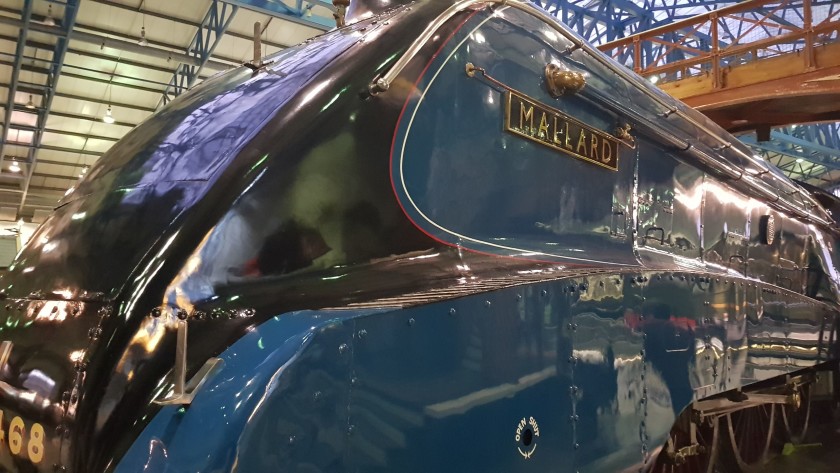
The wonder that is Britain’s National Railway Museum is on the other side of York station to the city centre.
At the opposite end of the footbridge to the station’s main entrance are some steps which lead down to a car park.
One you've descended these stairs and walked ahead, you’ll soon see the museum entrance over to the left.
Please support ShowMeTheJourney
This second version of ShowMeTheJourney is exciting and new, so we are genuinely thrilled that you are here and reading this, but we also need your help.
We’re striving not to let anything get in the way of providing the most useful service possible, hence a facility has been set up with DonorBox which can be used to support the running costs and make improvements.
Instead of advertising or paywalls, your financial support will make a positive difference to delivering an enhanced service, as there’s a lot of ideas which we want to make happen.
So if you have found the info provided here to be useful, please go here to say thank you.
Journeys
# Jump to a directionDirections
Journeys to York
Jump to directionsEdinburgh to York by train
Glasgow to York by train
London to York by train
Manchester to York by train
This second version of ShowMeTheJourney is exciting and new, so we are genuinely thrilled that you are here and reading this, but we also need your help.
We’re striving not to let anything get in the way of providing the most useful service possible, hence a facility has been set up with DonorBox which can be used to support the running costs and make improvements.
Instead of advertising or paywalls, your financial support will make a positive difference to delivering an enhanced service, as there’s a lot of ideas which we want to make happen.
So if you have found the info provided here to be useful, please consider saying thank you.

This is one of more than 100 train travel guides available on ShowMeTheJourney, which will make it easier to take the train journeys you want or need to make. As always, all images were captured on trips taken by ShowMeTheJourney.




